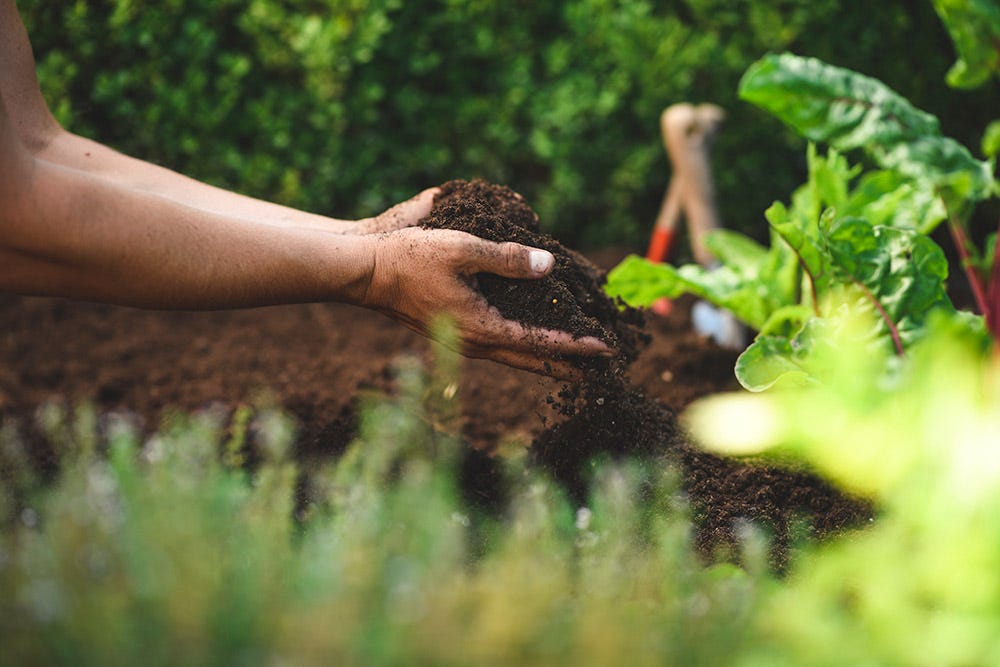
Along with picking the last of the winter crops and preparing the ground for new ones, you can begin sowing globe artichokes, sprouting broccoli and tomatoes in a propagator before planting outside. Sow seeds for hardier veg such as leeks, onions, Brussels sprouts, chard and spinach, straight into shallow drills of moist, well-drained soil – then cover with a cloche.
Warm up the beds
Before sowing, it’s important to devote most of February to aerating, draining and warming the soil. Dig in plenty of compost from your homemade heap or manure. Or add a top dressing of organic matter and cover in plastic sheeting. Leave this in place for a few weeks to heat the soil underneath and prevent weeds.
Clean and set up cloches
Garden cloches create a warm microclimate that helps shield germinating seedlings and young plants from harsh weather and pests. Cover early crops a few weeks before sowing over level, raked soil. Remember to wash the sides of plastic or glass cloches to ensure maximum sunlight gets through.
Prune raspberry canes
Now that autumn-fruiting raspberries have finished, you want to cut away any dead canes – back to the ground. This prevents new shoots getting damaged as they emerge, and helps them grow up strong enough to hold the ripe fruit crop. This is the month to also plant new raspberry canes.
Take your pick of the salad leaves
Rocket and other winter lettuce plants sowed last autumn are ready to pick throughout February, along with mizuna. This Japanese brassica has a mild mustard flavour and makes a great edging for your veg plot.
Enjoy the last of the kale
Winter-hardy, delicious and nutritious. Whether you’ve planted dark green Cavolo Nero or purple Redbor, this month is probably your final opportunity to harvest kale leaves. And if you spot any side shoots, crop these over the next few weeks to stop the plant going to seed.
Start broad beans undercover
Broad beans are a much-loved and versatile vegetable. Sow the seeds indoors in deep pots or modules. Place these in a frost-free location, such as an unheated greenhouse or cold frame. Germination takes about three weeks. Six weeks later, the seedlings will be ready to plant out.
Plant rhubarb, the king of crumbles
If you’ve not grown rhubarb before, bear in mind that new plants take two years to establish before their deep pink stalks will be ready to cook with. For varieties you can plant in spring:
-
Choose a bright, open position with enough space for the plant to spread out
-
Dig plenty of nutritious compost deeply into the soil
-
Make a large hole so the buds of the crowns are level with the surface
-
Firm in and water well


 Free Delivery
Free Delivery White glove service
White glove service Payments
Payments